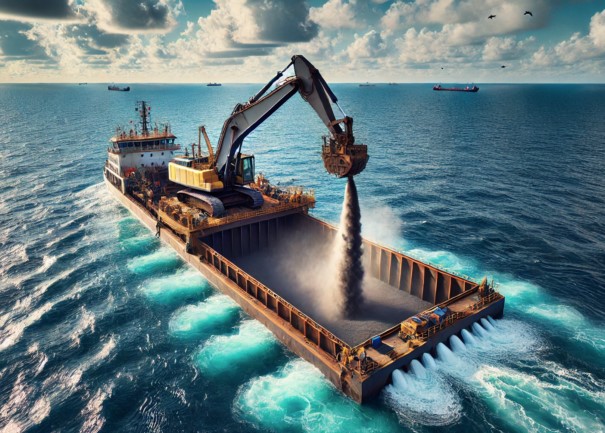China is rapidly increasing its use of nuclear power to meet rising energy demands. But with this growth comes a serious challenge—finding enough uranium to keep the nuclear plants running.
China’s Growing Need for Uranium
In 2024, China imported about 13,000 tonnes of natural uranium. At the same time, the country’s own mines could only produce around 1,700 tonnes. This huge gap between supply and demand has led Chinese scientists to look elsewhere for these resources.
One surprising place they’re now focusing on is the ocean. Earth’s oceans contain a massive amount —around 4.5 billion tonnes. That’s about 1,000 times more than the uranium reserves found in the ground.
But the challenge is that this is extremely diluted in seawater. In every tonne of seawater, there’s only about 3.3 milligrams of uranium. That’s less than one-thousandth of an ounce. Extracting it is like trying to collect grains of salt from a swimming pool.
To make things even harder, uranium in seawater is mixed with other metals, including vanadium. Vanadium is chemically similar to uranium, making it difficult to separate the two. Scientists need to find a way to collect uranium without also pulling in vanadium.
China’s Provocative War Drills and Military Power Show Near Taiwan Escalates Tensions of Conflict
Breakthrough in Uranium-Vanadium Separation
Chinese scientists have now made a major breakthrough. A team working on advanced materials has created a new type of material that can pull uranium out of seawater much more efficiently than before. This new technology improves the uranium collection process by making it 40 times more efficient at separating uranium from vanadium.
The key to this success lies in a special type of material known as a metal-organic framework, or MOF. MOFs are made by combining metal particles with organic (carbon-based) molecules. These materials have tiny pores and a very large surface area. That makes them great for trapping specific particles, from a mixture.
But traditional MOFs have their own problems. If the structure is too precisely designed, it can actually reduce the number of spots where uranium can stick. This reduces how much uranium the material can collect.
So, the scientists added something new to the MOF—molecules of a chemical called diphenylethylene, or DAE. DAE allows the MOF to change its pore size when it’s exposed to ultraviolet light. This makes the material more flexible and better at attracting particles.
China’s Bold J-36 Test Sends Stealthy Warning to U.S. F-47 NGAD
To test the new material, the team placed it in both simulated seawater and real seawater samples. These samples contained not only uranium, but also metals that behave like uranium, including vanadium. The results were impressive. The material showed a uranium adsorption capacity of 588 milligrams per gram.
That means each gram of this new material could collect nearly 0.6 grams of uranium. It also showed a uranium-vanadium separation factor of 215. That’s the best performance ever recorded in tests using either artificial or real seawater.
This improvement means that the material can now gather it from seawater far more effectively than before, without collecting too much vanadium. It’s like having a powerful magnet that only attracts what you want and ignores the rest.
National Efforts in Marine Uranium Collection
China has been working on seawater uranium extraction for several years. Back in the 1980s and 1990s, Japan led the way in this area. Japanese researchers managed to collect 1 kilogram of uranium concentrate—also known as yellowcake—during large-scale tests at sea.
AUKUS in Peril: US Struggles to Deliver 41st Virginia-Class Submarine Amid $3.2B Crisis
That remains the most ever collected using this method. Inspired by this, China has set its own goals for extracting uranium from the sea.
In 2019, a major alliance was formed in China to work on this effort. This alliance brings together 14 top research institutes and is overseen by the country’s main nuclear organization. The alliance created a detailed plan that stretches out to 2050. Its first goal, for the years 2021 to 2025, is to match Japan’s record of collecting 1 kilogram of uranium from seawater.
Looking further, the alliance aims to build a demonstration facility that can extract uranium on a larger scale. The plan also includes developing technology that can support continuous production of uranium from seawater.
This new discovery about the DAE-MOF material represents a major step forward. The improved ability to extract selectively and efficiently makes it easier for China to tap into the oceans’ vast uranium supply. With demand for uranium expected to rise steadily, finding new ways to collect it has become more urgent than ever.
China’s Veiled Warning to US; WZ-9 Drone Could Detect F-35 and B-21
These efforts show how advanced materials science can play a key role in solving big challenges. By focusing on the smallest particles in the sea, scientists are helping to address some of the world’s biggest energy needs.

